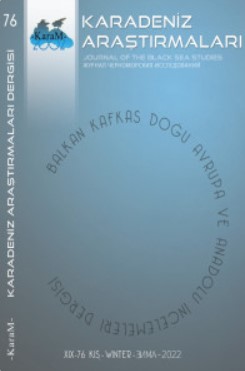KIRMIZI SAÇLI KADIN ROMANINDA İKTİDARIN KUYUSUNU KAZMAK
DIGGING A PIT FOR POWER IN THE NOVEL “KIRMIZI SAÇLI KADIN”
Author(s): Osman ORUÇSubject(s): Turkish Literature, Theory of Literature
Published by: Karadeniz Araştırmaları Merkezi
Keywords: Orhan Pamuk; Kırmızı Saçlı Kadın; competence; East-West;
Summary/Abstract: The East-West issue, which constituted the main thematic agenda of the Turkish novel from its beginning until the period when class conflicts began to be discussed more in the 1940s, has been a subject that Orhan Pamuk has emphasized in almost all of his novels since his first novel. He with the reality of the Turkish society, which experiences the conditions of being in a position between East and West geographically and culturally, in his novels – this is especially true in “Kırmızı Saçlı Kadın” (The Red-Haired Woman). He has designed its story around the axis of the meaning that Eastern and Western thought ascribe to the relationship between competence and subject, and how each approach both phenomena. He handles the relationship between competence through two sets of symbols: father/son and master/apprentice in the novel. He does this to discuss, contrast, and compare the texts/narratives built by Eastern and Western societies and how they reflect the collective subconscious. The novel focuses on the conflict between the father, who is the representative figure of competence, and the son who tries to be himself against him. He examines the cultures of obedience to power and rebellion in the context of the narratives of King Oedipus, Rüstem, and Sührab, lending it an intense inter-textual relationship. In this study, we shall examine and emphasize the relationship between authority/competence, the main theme of “Kırmızı Saçlı Kadın,” and the son's effort to understand himself in the face of authority.
Journal: Karadeniz Araştırmaları
- Issue Year: 2022
- Issue No: 76
- Page Range: 1261-1272
- Page Count: 12
- Language: Turkish

